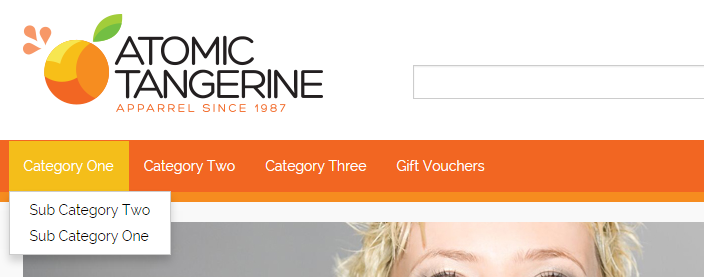Best practices for ecommerce web design (part 1)
Many business owners realise that an ecommerce website is essential to their continued growth, but what makes a good ecommerce website? In today’s post, we provide you with some design pointers to help increase your online sales.
Header
The header of a website is one of the most important areas – it’s where your company logo is placed, cart and checkout links, and also a navigation section.

Some essential elements to consider for your website header are as follows:
Cart button
.png) A cart button allows the customer to view the contents of their cart, including the total price of their potential order. Clicking on the button will reveal this information, with the added functionality of being able to add or remove the listed items at will.
A cart button allows the customer to view the contents of their cart, including the total price of their potential order. Clicking on the button will reveal this information, with the added functionality of being able to add or remove the listed items at will.
Providing easy access to this information ensures that the customer can easily check or update their order without leaving their current page, effectively keeping them shopping for longer periods.
Checkout link
It’s important that when the customer has decided to complete their order, they can quickly navigate to the checkout page to do so.
Having a link that stands out from the rest of your website (usually with a colour which stands out from the website’s palette) will mean that users can purchase items quickly, thus increasing sales.
Navigation
Users must be able to navigate your ecommerce site easily, which means the inclusion of a clearly defined category menu in the header. If you have sub-categories as part of your data structure, they should be viewable when hovering over a top-level category in the navigation section.

If you have an unusual number of sub-categories or a complex data structure, you may want to consider a mega menu – a larger, column-based menu that accommodates for many more links. Essentially, the customer should be able to reach lower-level categories directly from the header, without having to change pages.
Clear search bar
The search bar – another of a website’s most important navigation tools. Many people prefer to use search instead of navigation menus, so ensure that your search bar is well-placed in the header, being easily spotted.

USPs
What distinguishes your business from your competitors? Having a list of unique selling points in the header of your website will evoke a surge of confidence in your customers. Free shipping for orders over $100? Awesome – I choose you!
Footer
A website footer is usually reserved for less-important links, but there are certain elements to consider which would add value to your online business.
Payment icons
These confidence-boosters will help to convince your customers that you’re a secure, legitimate business. As a company who accepts online credit card payments, both a bank and a payment gateway have given your business the thumbs up to sell online, lending credibility to your company. Also, the icons look rather pretty.

Useful links
Even though the footer is relegated to the very bottom of a website (by its very definition), you can still use the area well by providing the customer with useful links for browsing your site. In fact, a requirement of many payment gateways is to provide users with privacy, returns, and security policies – making them ideal page links to include in the footer.

Company info
Another payment gateway requirement is to show your company’s ABN in the footer. In addition, a full address and contact information provides further assurance to those customers with a nervous disposition.
Stay tuned for part 2
That concludes part one of Best practices for ecommerce web design – we hope you found it useful!
Stay tuned for part two where we will be looking at best practices for your:
- Homepage;
- Category page;
- Product page; and,
- Checkout page.


